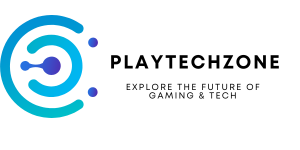By: Peter, Tech Expert and Content Writer at Playtechzone.com
The semiconductor industry witnessed a pivotal moment on February 21, 2024, as Intel held its inaugural IFS Direct Connect event in Santa Clara. This event marked a significant shift in Intel’s strategic direction, emphasizing its commitment to becoming a dominant force in the foundry market.
This article delves into the key announcements and insights from the event, examining Intel’s bold vision for its foundry business and its potential to reshape the semiconductor landscape.
A New Era: From IFS to Intel Foundry
Intel kicked off the event by announcing a significant restructuring and rebranding of its foundry operations. The company consolidated its fab, testing, packaging, technology development, global manufacturing and supply chain, and foundry services and ecosystem operations under a single banner: Intel Foundry.
This strategic move signifies Intel’s ambition to establish a unified and powerful entity dedicated to serving external foundry customers.
The Systems Foundry: A Paradigm Shift in Chip Manufacturing
Intel Foundry isn’t just about building chips; it’s about building systems of chips. This concept, termed the “Systems Foundry,” represents a fundamental shift from the traditional foundry model.
While companies like TSMC excel in processing wafers and providing basic packaging, Intel Foundry aims to offer a more comprehensive approach. This encompasses:
- World-Class Foundry and Ecosystem: Providing cutting-edge manufacturing processes, a robust ecosystem of partners, and access to essential design tools and intellectual property (IP).
- Manufacturing Resiliency: Addressing geopolitical concerns by offering a secure and reliable supply chain with a focus on environmental sustainability.
- System of Chips Expertise: Leveraging Intel’s extensive experience in system architecture and software to help customers design and integrate complex, multi-chiplet systems.
This holistic approach aims to empower customers to create highly customized and optimized chip solutions, particularly in rapidly evolving fields like artificial intelligence (AI).
Powering the AI Revolution
AI is undeniably the driving force behind the next wave of computing, and Intel Foundry is positioning itself at the forefront of this revolution. The company recognizes the increasing demand for high-performance, power-efficient AI accelerators and is investing heavily in technologies to meet these needs.
Key highlights include:
- Advanced Packaging Technologies: Intel is leveraging its expertise in advanced packaging, including EMIB and Foveros Direct, to enable the creation of densely integrated, high-bandwidth AI chips.
- PowerVia Backside Power Delivery: This innovative technology, featured in Intel’s 18A node, addresses the power delivery challenges posed by high-power AI accelerators.
- New Memory Technologies: Intel is exploring new memory technologies to provide the bandwidth and efficiency required for AI workloads.
- Silicon Photonics and Co-Packaged Optics: These advanced interconnect technologies are crucial for handling the massive data movement demands of AI systems.
By combining these hardware innovations with its software expertise, Intel Foundry aims to become the go-to partner for companies developing AI solutions across various industries.
Partnerships: The Cornerstone of Success
Intel understands that it cannot achieve its ambitious goals alone. The company is actively forging partnerships with key players in the semiconductor ecosystem, including:
- Arm: This strategic collaboration focuses on enabling Arm’s Neoverse platform on Intel’s 18A process technology, opening up new possibilities for high-performance computing.
- EDA Tool Vendors: Partnerships with leading EDA companies ensure that customers have access to the tools and support needed to design chips for Intel Foundry’s advanced nodes.
- IP Providers: Collaborations with IP providers ensure that customers have access to a wide range of pre-designed and validated components, accelerating the design process.
A Glimpse into the Future
Intel Foundry’s Direct Connect event provided a compelling glimpse into the future of chip manufacturing. The company’s commitment to innovation, its focus on AI, and its collaborative approach position it as a formidable force in the foundry market.
While it remains to be seen how Intel’s ambitious plans will unfold, the company’s vision for a “Systems Foundry” has the potential to reshape the semiconductor landscape and accelerate the development of next-generation technologies.
FAQs
Q: What is Intel Foundry?
A: Intel Foundry is a newly formed division within Intel dedicated to manufacturing chips for external customers. It encompasses all aspects of chip manufacturing, from design to packaging.
Q: How is Intel Foundry different from other foundries?
A: Intel Foundry differentiates itself with its “Systems Foundry” approach, which goes beyond traditional wafer fabrication to offer customers expertise in system architecture, software, and advanced packaging technologies.
Q: What is the significance of Intel’s 18A node?
A: The 18A node is Intel’s most advanced manufacturing process, featuring RibbonFET transistors and PowerVia backside power delivery. It is crucial for enabling high-performance, power-efficient chips, particularly for AI applications.
Q: Why is Intel partnering with Arm?
A: The partnership with Arm allows customers to leverage Arm’s energy-efficient Neoverse CPU architecture on Intel’s advanced 18A manufacturing process, opening up new possibilities for data center and AI applications.
Q: What is the future of Intel Foundry?
A: Intel Foundry aims to become a leading player in the foundry market, challenging established players like TSMC. The company’s focus on advanced technologies, its collaborative approach, and its commitment to AI position it for potential success in the years to come.
Resources
- Intel Foundry Announces New Era of System Foundry
- Arm and Intel Foundry Extend Collaboration to Enable the Ecosystem on Intel 18A
- TSMC
